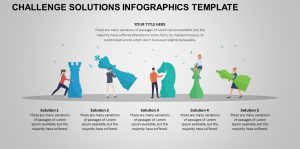
Introduction
In today’s rapidly evolving digital landscape, the realm of education is undergoing a profound transformation. The traditional paradigm of learning confined within classroom walls is being challenged by the advent of innovative technologies. Among these, video platforms have emerged as a powerful catalyst, revolutionizing the way knowledge is disseminated and acquired.
The Rise of Video Platforms
Educational videos have come a long way from being mere supplementary resources to becoming integral components of modern pedagogy. With the proliferation of high-speed internet and mobile devices, learners now have unprecedented access to a wealth of educational content at their fingertips. This accessibility has democratized education, breaking down barriers of geography and socioeconomic status.
Advantages of Video Learning
The allure of video-based learning lies in its ability to cater to diverse learning styles and preferences. Visual and auditory stimuli engage learners more effectively than traditional text-based materials, resulting in higher levels of retention and comprehension. Moreover, the flexibility offered by on-demand video content accommodates the busy schedules of modern learners, allowing them to learn at their own pace and convenience.
Challenges and Solutions

Despite its myriad benefits, video-based learning is not without its challenges. Concerns regarding digital divide, bandwidth limitations, and excessive screen time have been raised. However, technological advancements and innovative pedagogical approaches are addressing these concerns. For instance, adaptive streaming technologies optimize video playback based on available bandwidth, ensuring a seamless viewing experience for users with varying internet connections.
Interactive Learning Experiences
One of the most exciting developments in video-based learning is the integration of interactive elements such as quizzes, simulations, and gamified activities. These features not only enhance engagement but also promote active participation and knowledge retention. By transforming passive viewers into active learners, interactive videos foster a deeper understanding of complex concepts and encourage critical thinking skills.
Emerging Trends in EdTech
The future of learning is shaped by cutting-edge technologies such as virtual reality (VR) and augmented reality (AR). These immersive technologies offer unparalleled opportunities for experiential learning, allowing students to explore virtual environments and interact with digital objects in ways previously unimaginable. Similarly, artificial intelligence (AI) is revolutionizing educational videos by enabling personalized learning experiences tailored to each student’s unique needs and preferences.
Impact on Traditional Education
The integration of video platforms into traditional educational settings is redefining the role of educators and classrooms. Blended learning models combine online video resources with face-to-face instruction, offering the best of both worlds. However, this transition requires educators to adapt to new teaching methodologies and acquire digital literacy skills to effectively leverage video-based tools in the classroom.
The Future Landscape

Looking ahead, the future of learning is characterized by continuous innovation and adaptation. Video platforms will play an increasingly central role in lifelong learning, providing learners of all ages with access to high-quality educational content anytime, anywhere. From microlearning modules to full-fledged online courses, the possibilities are limitless. The future of video learning platforms holds exciting possibilities, with artificial intelligence and gamification poised to drive further innovation. These trends promise even more immersive and personalized learning experiences
Case Studies and Success Stories
Numerous success stories abound, showcasing the transformative impact of video platforms on education. Institutions and educators worldwide are harnessing the power of video to engage students, improve learning outcomes, and democratize access to education. From Khan Academy to Coursera, these platforms have become synonymous with the future of learning.
Rethinking Assessment Methods
As learning environments evolve, so too must assessment methods. Traditional standardized tests are giving way to more dynamic and authentic forms of assessment, such as project-based portfolios and competency-based evaluations. Video platforms enable educators to collect rich data insights and provide personalized feedback, empowering learners to track their progress and take ownership of their learning journey.
Conclusion
In conclusion, the future of learning is intrinsically tied to the transformative potential of video platforms. By harnessing the power of technology, educators can create engaging, personalized learning experiences that empower learners to thrive in an ever-changing world. As we embrace the possibilities of video-based learning, we embark on a journey towards a more inclusive, accessible, and effective education system.
_____________________________________________________________________________________
FAQs
How do video platforms enhance learning outcomes?
Video platforms enhance learning outcomes by providing visual and interactive content that caters to different learning styles. They make complex concepts easier to understand, increase engagement, and improve retention rates among learners. Additionally, features like quizzes and interactive exercises promote active learning, leading to better comprehension and mastery of subjects.
Are video-based courses suitable for all age groups?
Yes, video-based courses are suitable for learners of all age groups. They offer flexibility and accessibility, allowing individuals to learn at their own pace and convenience. Whether you’re a student, a working professional, or someone looking to acquire new skills, video platforms provide a diverse range of educational content tailored to various learning needs and preferences.
What are the potential drawbacks of video-based learning?
While video-based learning offers many benefits, there are some potential drawbacks to consider. These may include issues related to internet connectivity and access to technology, especially in underserved communities. Moreover, prolonged screen time can lead to eye strain and fatigue, highlighting the importance of balancing digital learning with other activities.
How can educators integrate video platforms into their teaching?
Educators can integrate video platforms into their teaching by incorporating videos as supplementary resources, creating flipped classroom experiences, or designing fully online courses. They can curate existing videos or produce their own content tailored to their curriculum and instructional objectives. Additionally, educators can use features like discussion forums and quizzes to engage students and assess their understanding of the material.
Are there any privacy concerns associated with video-based learning?
Privacy concerns associated with video-based learning primarily revolve around data security and student privacy. Educators and platform providers must ensure compliance with relevant regulations such as the Family Educational Rights and Privacy Act (FERPA) to safeguard sensitive information. This may include implementing encryption protocols, obtaining consent for data collection, and maintaining secure storage practices.
Can video platforms replace traditional classrooms entirely?
While video platforms offer valuable supplementary resources and alternative learning modalities, they are unlikely to replace traditional classrooms entirely. Face-to-face interactions between students and teachers play a crucial role in social and emotional development, collaborative learning, and hands-on activities. However, video platforms complement traditional instruction by expanding access to educational content and facilitating personalized learning experiences.










